Greece has this way of weaving food into every part of life. Every meal feels like a story—sometimes ancient, sometimes just about the moment. After wandering through this culinary paradise, I realized Greek cuisine is so much more than the gyros or feta cheese you might expect.
It’s a wild, sensory ride—one that pulls you straight into thousands of years of tradition and that signature Mediterranean hospitality.
Let’s get into my five essential Greek culinary experiences. These aren’t just “must-eats”—they’re the heartbeats of Greek food culture.
From the rich layers of moussaka to the casual joy of sharing meze with friends, each one shows off a different side of what makes eating in Greece so special.
Some dishes are time-honored classics passed down through families. Others are quirky regional specialties you’ll only find if you leave the tourist path.
Let’s dig into the core flavors, the communal magic, and the best ways to find real-deal food experiences all over Greece. There’s a world of cooking classes, wine tastings, and hands-on adventures waiting for you if you want to dive deeper.

The Essence of Greek Cuisine: Core Flavors and Techniques
Greek food, at its core, is about three things: killer olive oil, super-fresh local ingredients, and old-school cooking techniques.
These basics make the flavors pop, but never feel fussy.
The Role of Olive Oil in Greek Cooking
If you ask me, olive oil is the soul of Greek food. It’s not just something they cook with—it’s everywhere.
People in Greece drizzle it over salads, dunk bread in it, and even finish dishes with a good pour right before serving.
Most of the oil comes from ancient groves, which, honestly, you can taste in every bite.
Extra virgin olive oil is standard here. It’s peppery, a bit fruity, and it turns even a humble tomato into something crave-worthy.
I’ve seen cooks finish tons of dishes with raw olive oil. This keeps flavors bright and adds this richness that never feels heavy.

Fresh Ingredients and Regional Variations
Greek cooks always chase the freshest ingredients. Most shop daily, picking up whatever’s best at the market.
Every region in Greece has its own thing going on. Crete is all about dakos with juicy tomatoes and salty cheese, while Santorini puts its unique fava beans front and center.
On the islands, seafood and salty-air veggies rule. Up in the mountains, you’ll find more meat and hearty grains.
Seasonal eating isn’t just a trend here—it’s the norm. Spring means wild greens and herbs. In the summer, it’s all about the tomatoes, peppers, and eggplants. Colder months bring out the pickles and slow-cooked comfort food.
Traditional Cooking Methods
Greek cooks keep things simple, letting ingredients speak for themselves.
Charcoal grilling brings out smoky flavors in souvlaki and fish. The outside gets nicely seared, while the inside stays juicy.
Slow braising turns tough cuts into melt-in-your-mouth stews. They toss in wine, herbs, and veggies, then let everything bubble away for hours.
Layering flavors is a big deal, especially in moussaka. Each layer gets its own seasoning, so the final dish is way more than the sum of its parts.
A lot of dishes bake in clay or ceramic pots. These add a subtle earthiness and keep the heat nice and even.
Must-Try Greek Classics: Moussaka, Bougatsa, and More
When I think of authentic Greek cuisine, a few classics instantly pop into my mind.
Moussaka is the ultimate comfort food, while bougatsa proves Greeks know their way around pastries.
Moussaka: The Quintessential Greek Comfort Dish
Moussaka is a showstopper. It’s this layered casserole—eggplant, spiced meat (usually lamb or beef), and a thick, dreamy béchamel sauce.
First, you salt and grill the eggplant slices. This step is key—it takes away bitterness and gives them a perfect texture.
Traditional moussaka layers:
- Bottom: Sliced eggplant or sometimes potatoes
- Middle: Spiced ground lamb or beef with tomatoes
- Top: Béchamel sauce, sometimes with cheese
The meat gets a hit of cinnamon and allspice—those warm spices make it taste unmistakably Greek.
Bake it until the top is golden and a little crisp. Let it rest for a bit after coming out of the oven; the layers settle and slice up beautifully.
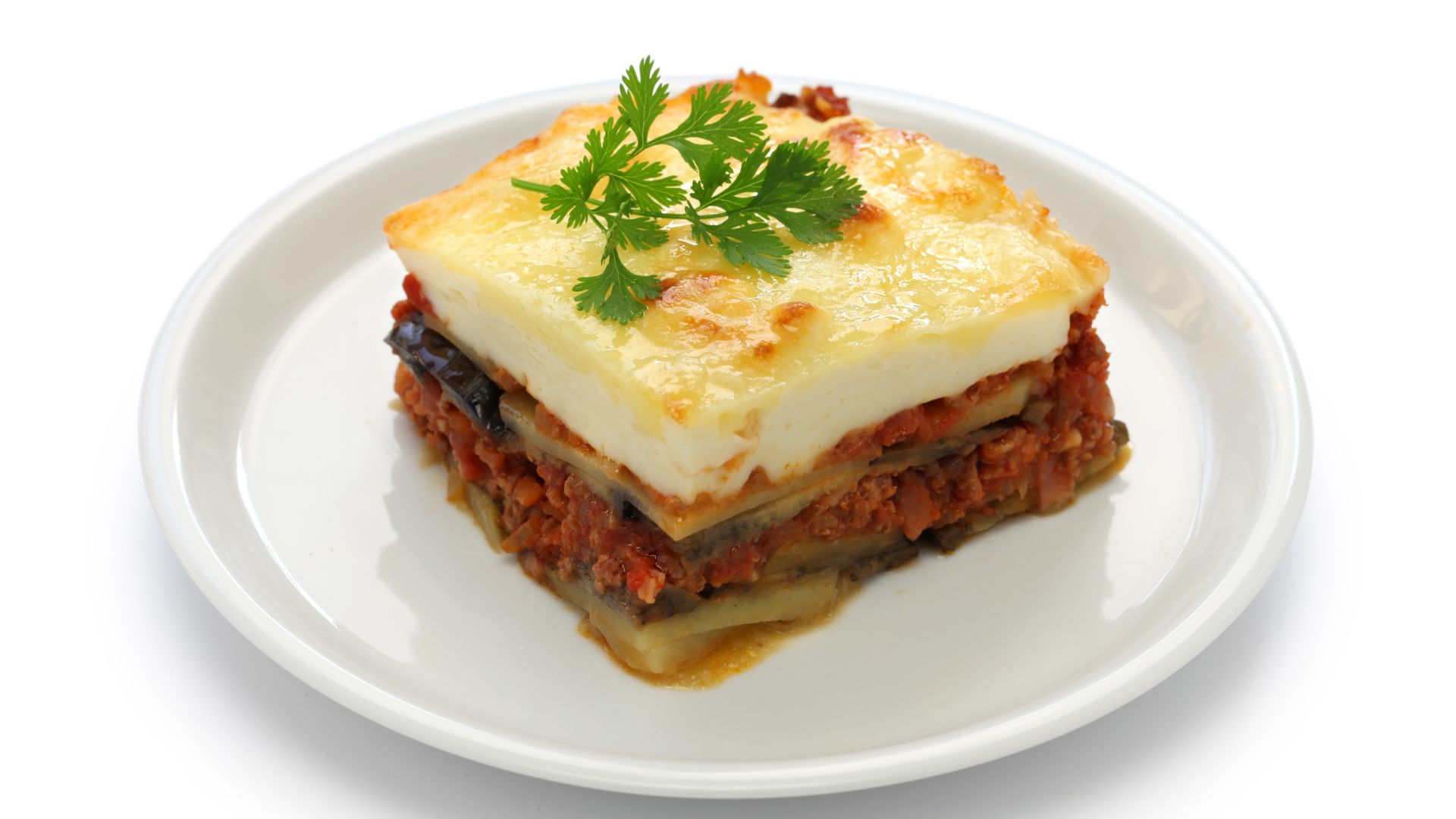
Bougatsa: A Northern Greek Pastry Delight
Bougatsa totally changed how I see Greek pastries. It’s a specialty from the north, especially Thessaloniki, and it’s all about flaky phyllo and luscious fillings.
They stretch the phyllo dough so thin you can almost see through it. It’s impressive—and takes years to master.
Popular bougatsa fillings:
- Custard – Sweet and creamy, made with semolina and milk
- Cheese – Usually feta or mizithra
- Minced meat – Savory and satisfying
Right out of the oven, bougatsa gets a dusting of powdered sugar and cinnamon. The contrast between crispy pastry and soft filling is unreal. Eat it warm if you can—trust me.
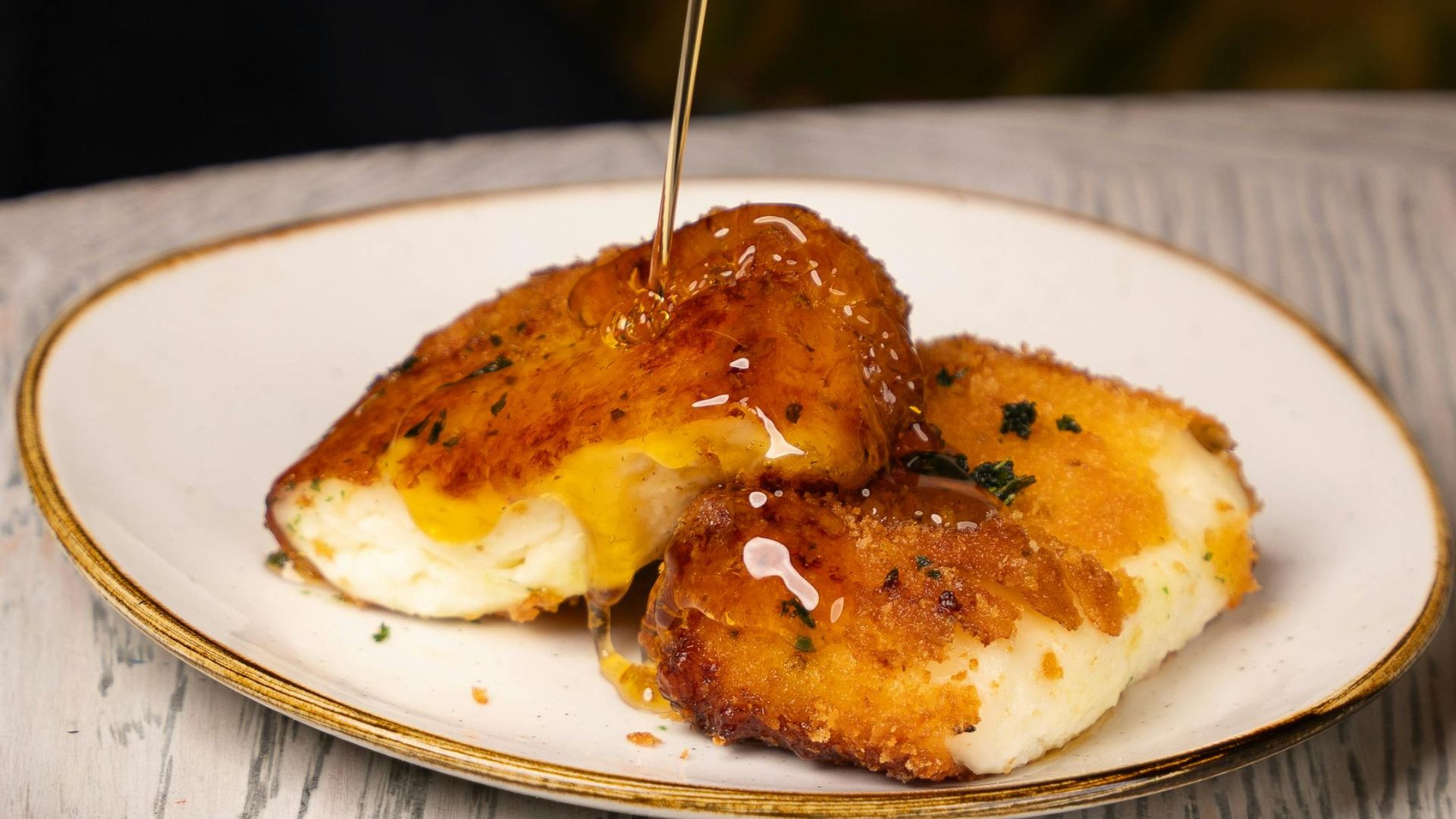
Pastitsio and Other Hearty Main Courses
Pastitsio is Greece’s answer to lasagna, but with a twist. Think thick pasta, spiced meat sauce (yep, more cinnamon), and a rich béchamel top.
The pasta is usually a fat macaroni or bucatini. The flavors are unmistakably Greek.
Other mains worth seeking out? Spanakopita—that’s spinach and feta tucked into crispy phyllo. Dolmades—grape leaves stuffed with herbed rice.
Key Greek main dishes:
- Pastitsio – Baked pasta with meat and béchamel
- Spanakopita – Spinach and feta pie
- Dolmades – Stuffed grape leaves
- Souvlaki – Grilled meat skewers
These dishes blend rich, bold flavors with fresh, local ingredients. Each one tells a little story about where it comes from.
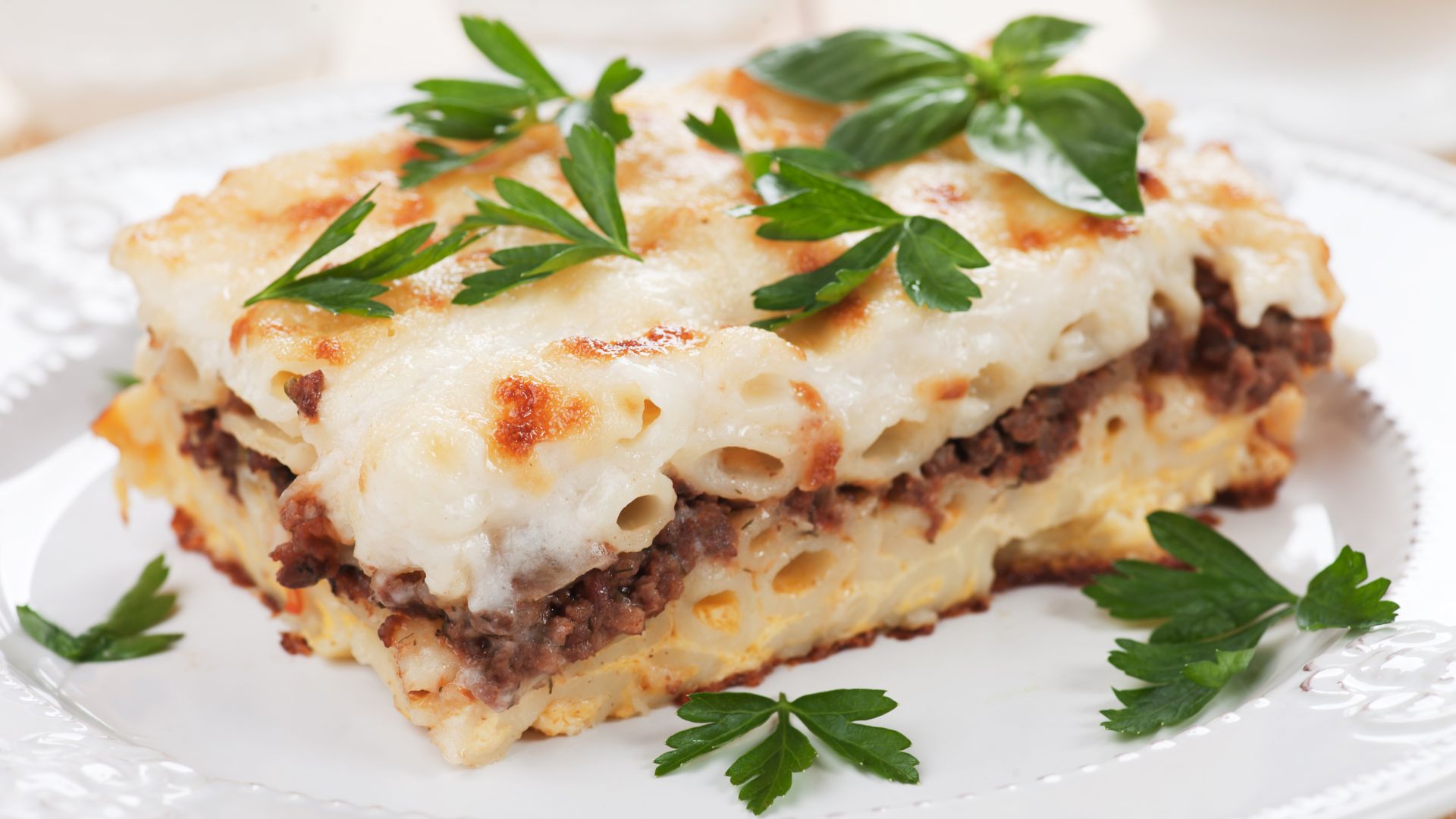
The Art of Sharing: Meze and Social Dining Traditions
Greek meze isn’t just about food—it’s about connection.
Small plates, big conversations, and a table that always feels full.
Meze Plates and Their Cultural Significance
My first real meze experience surprised me. “Meze” means “a taste,” but honestly, it’s so much more.
Meze is all about philoxenia—Greek hospitality and the joy of welcoming others. Each little plate sparks conversation. Meals stretch on, and nobody’s in a hurry.
Ouzo or wine usually joins the party. The drinks loosen up the table and make every bite taste better.
This tradition goes way back. In ancient times, Greeks gathered at mezedopolia—special taverns—to eat, debate, and just be together.
What makes meze special:
- Small plates mean you can try lots of things
- Sharing is the rule, not the exception
- Meals are slow and social
- There’s always something for everyone
Highlighting Olives, Cheeses, and Dips
I can’t imagine a meze spread without olives, cheese, and dips.
Kalamata olives are everywhere—dark, rich, and briny. They cure them in wine vinegar, which gives that punchy flavor.
Feta is king, but I’ve also tried graviera and kasseri, each with its own vibe. Sometimes they drizzle feta with honey, and wow, is that good.
Dips are where Greek creativity shines:
| Dip | Main Ingredients | Flavor Profile |
|---|---|---|
| Tzatziki | Yogurt, cucumber, garlic | Cool and refreshing |
| Melitzanosalata | Roasted eggplant | Smoky and rich |
| Taramosalata | Fish roe, bread | Creamy and briny |
Fresh bread and olive oil are always on the table. Greeks dip, drizzle, and mop up every last bit.
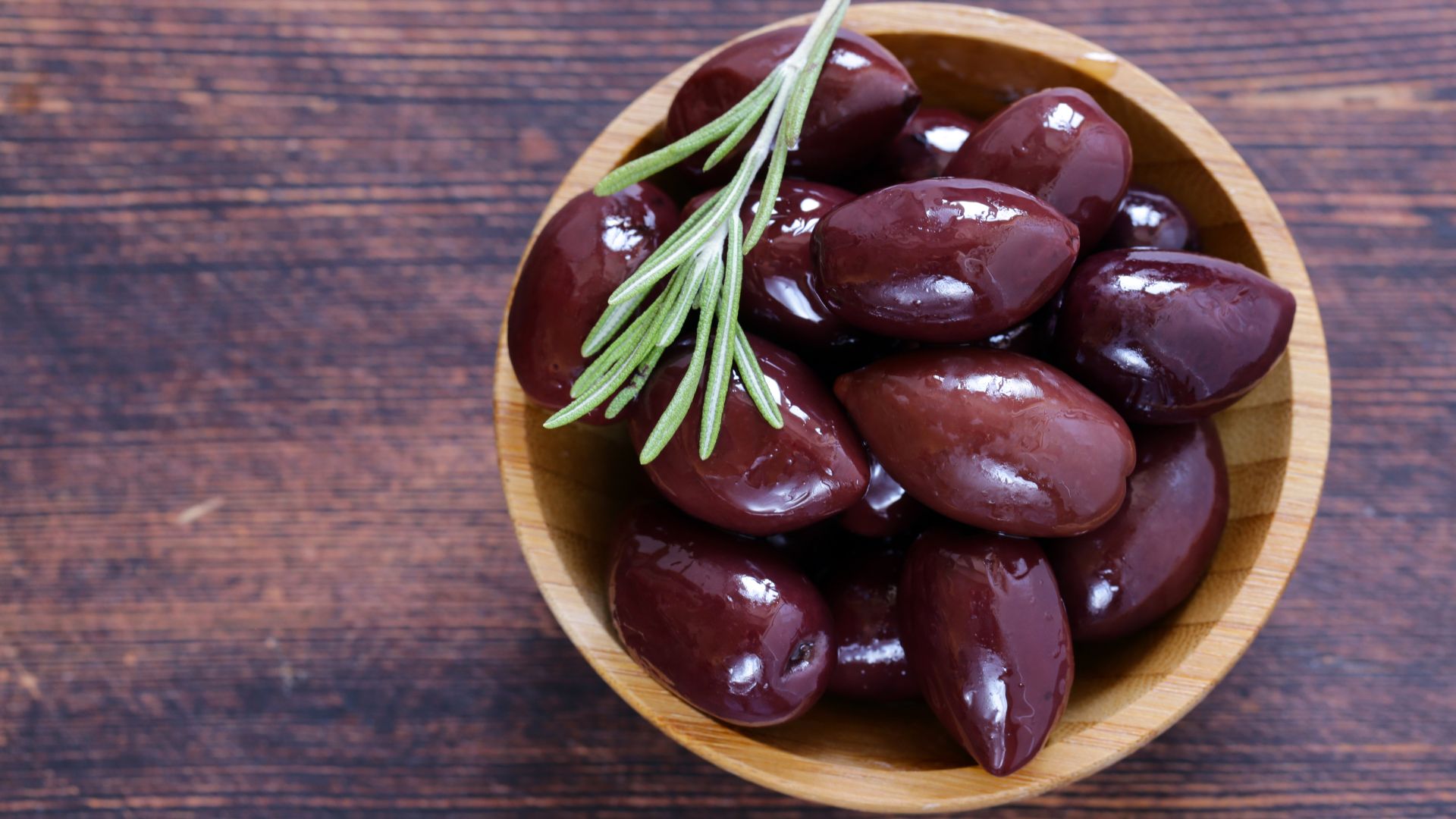
Tavernas and the Greek Social Table
Tavernas are where the magic happens.
These family-run spots feel more like someone’s living room than a restaurant.
Waiters tell you what’s fresh that day. Dishes arrive simple and unfussy—no fancy plating, just good food.
I’ve watched tables linger for hours. Greeks take their time with meze, chatting and laughing between bites.
Everyone shares everything. Plates pass around, and no one guards their favorite dish.
Even the owners sometimes join in, making you feel like part of the family.
Meze in a taverna isn’t about rushing or ticking boxes. It’s about enjoying the ride and letting each new plate bring a little surprise.
Culinary Destinations: Exploring Greece’s Regional Food Scenes
Every part of Greece brings its own flavors and stories to the table.
Athens is a wild mix of old and new. Crete celebrates farm-fresh everything. Naxos keeps island traditions alive.
Athens: A Capital of Ancient Flavors and Modern Tastes
Athens is the perfect launchpad for a food adventure.
The city blends classic tavernas with bold, modern restaurants.
Wandering the central markets, I found koulouri vendors on nearly every corner. These sesame bread rings are the ultimate street snack.
In neighborhoods like Monastiraki and Plaka, family-run spots serve up dishes locals have loved for generations. Fresh spanakopita and dolmades are everywhere.
Modern Athens chefs play with tradition, using ancient grains and forgotten veggies in creative ways. They honor the past while pushing things forward.
Food tours in Athens are a blast. I sampled honey-drizzled loukoumades and picked up stories behind every dish from passionate local guides.

Crete: Farm-to-Table Delicacies and Rustic Recipes
Crete’s food scene? It’s all about what grows in the island’s sun-soaked soil. I wandered through olive groves and vegetable patches where chefs literally pick their ingredients each morning.
Chania has this fascinating mix of flavors—thanks to a medley of cultural influences. Local dishes burst with foraged herbs, mountain cheeses, and wild honey. The taste combos are honestly unlike anything I’ve found elsewhere.
I joined an agritourism experience and cooked right alongside farmers. We used veggies we’d just picked, drizzled everything with fresh olive oil, and tore into wood-fired bread. It’s a hands-on way to see Crete’s farming roots in action.
You can’t really talk about Crete without mentioning traditional dishes like dakos—crunchy bread topped with juicy tomatoes and cheese. The locals also slow-cook meat stews with wild herbs, and every meal seems to tell a story about self-sufficiency.
Wine tasting here is a real treat. Local wines pair perfectly with regional cheeses and olives. Crete’s winemaking history goes back thousands of years, so you’re tasting something truly unique.
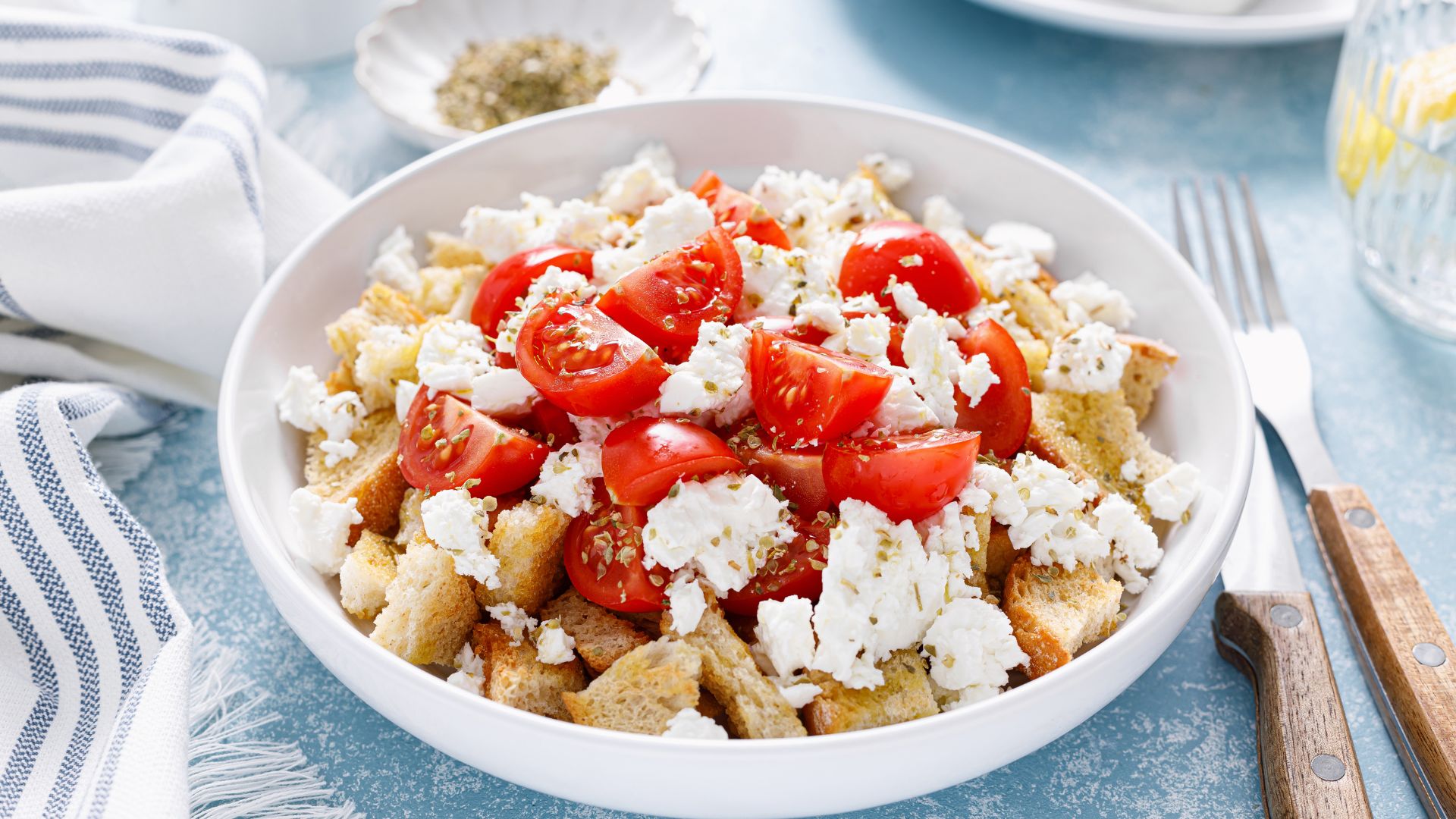
Naxos: Island Traditions and Local Specialties
Naxos feels like a time capsule for Greek cooking. Here, families still pass down recipes the old-fashioned way, and I got to join them for a true farm-to-table meal.
The island makes incredible graviera and arseniko cheeses. You’ll spot these cheeses in pies, salads, and pretty much every local dish worth trying.
Ever heard of Kitron liqueur? It’s made from citron leaves and is Naxos’s quirky claim to fame. I watched the distillation process and sampled a few versions with local sweets—definitely an experience.
Village tavernas serve up straightforward, honest food—think fresh fish, local lamb, and whatever veggies are in season. Every bite feels like a celebration of what the island grows.
The cooking classes here are something special. I learned how to make bread and cheese using time-honored techniques. There’s something grounding about connecting with food the way people have for generations.
Immersive Food Experiences: Tours, Wine Tasting, and Cooking Classes
If you really want to get Greek cuisine, go beyond just eating—jump in and get your hands messy. I’ve found that the best way to “get it” is by meeting the people who grow, make, and love this food.
Food Tours Through Markets and Bakeries
I always kick off my food adventures in Greece at the markets. Athens’ Central Market is a sensory overload—vendors calling out, heaps of olives, golden honey, and cheeses aging right in front of you.
The market tours in Thessaloniki are a little different. Local guides lead you to stalls run by families for decades. You’ll sample feta and discover why Greek olives have such a punchy flavor.
If you can, book a morning tour. The produce is at its best, and you’ll usually stop by a bakery to watch spanakopita and tiropita being made by hand.
Athens’ evening food tours take you off the tourist trail. You’ll duck into tavernas and street food joints where locals actually eat. Expect bites of souvlaki, gyros, and maybe a sweet treat or two.
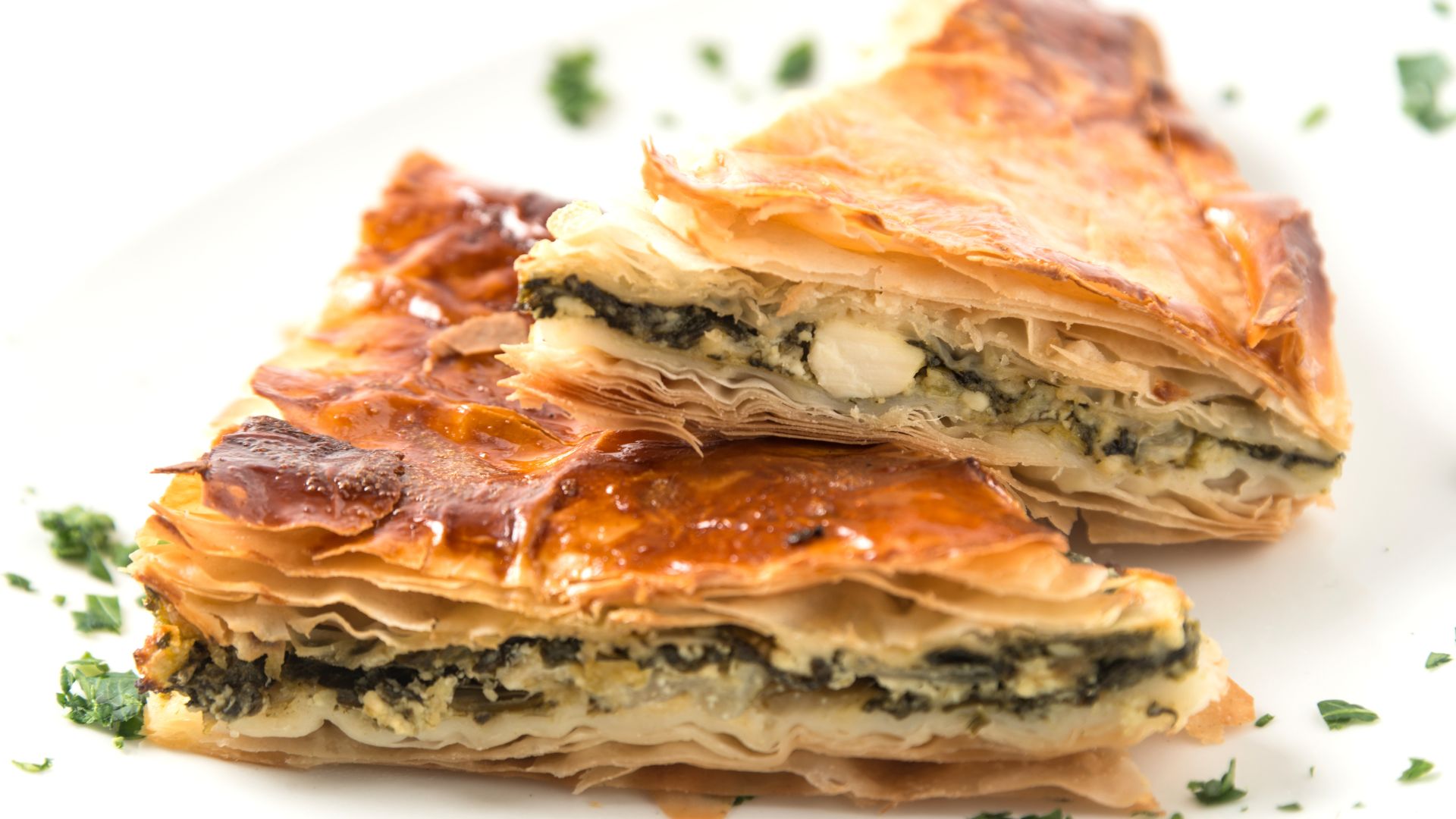
Greek Wine Tasting and Vineyard Visits
Greek wines totally surprised me. The Assyrtiko from Santorini, for example, gets this mineral kick from the volcanic soil.
I found my favorite wine experiences in places like Meteora and Nemea. These tours mix wine tastings with strolls through historic vineyards. Some wineries pair their pours with local dishes so you can really see how the flavors work together.
Winemakers here love sharing their process. Some still use methods that go back thousands of years. You’ll hear about native grapes like Agiorgitiko and Xinomavro.
Most vineyard visits mean you’ll walk among the vines and learn how the Greek climate shapes the wine. Tastings usually include several wines, plus local cheese and olives.
Hands-On Cooking Classes With Locals
Cooking classes in Greece changed how I see food. I realized that a good moussaka needs careful layering and just the right cheese.
One class near Kalamata stands out. We picked veggies straight from the garden and pressed our own olive oil. The instructor showed us how to spot great olive oil with just a sniff and a taste.
In Corfu, classes dive into dishes with Greek and Italian twists. You’ll make things like pastitsada and get a feel for the spices that make Ionian food so distinct.
Classes usually end with everyone sitting down together to share the meal. There’s wine, plenty of laughter, and time to swap tips about Greek food. The recipes are simple enough to try back home, which I love.
Frequently Asked Questions
Greek food gets people curious—there’s so much to taste and learn. Here are some quick answers to the questions I hear most.
What are the essential dishes to try for a complete Greek culinary experience?
Start with moussaka. It’s that comforting casserole with layers of eggplant, spiced meat, and creamy béchamel. Absolutely classic.
Souvlaki is next. Grilled meat on a skewer, tucked in pita with tzatziki—honestly, it’s the ultimate street food.
I always grab spanakopita when I can. The flaky pastry filled with spinach and feta works for breakfast or a snack.
Gyro is another must. Roasted meat, fresh veggies, creamy sauce, all wrapped in warm pita—it’s a meal that never disappoints.
And for dessert? Baklava. Those layers of phyllo, nuts, and honey syrup are a sweet finish you shouldn’t skip.
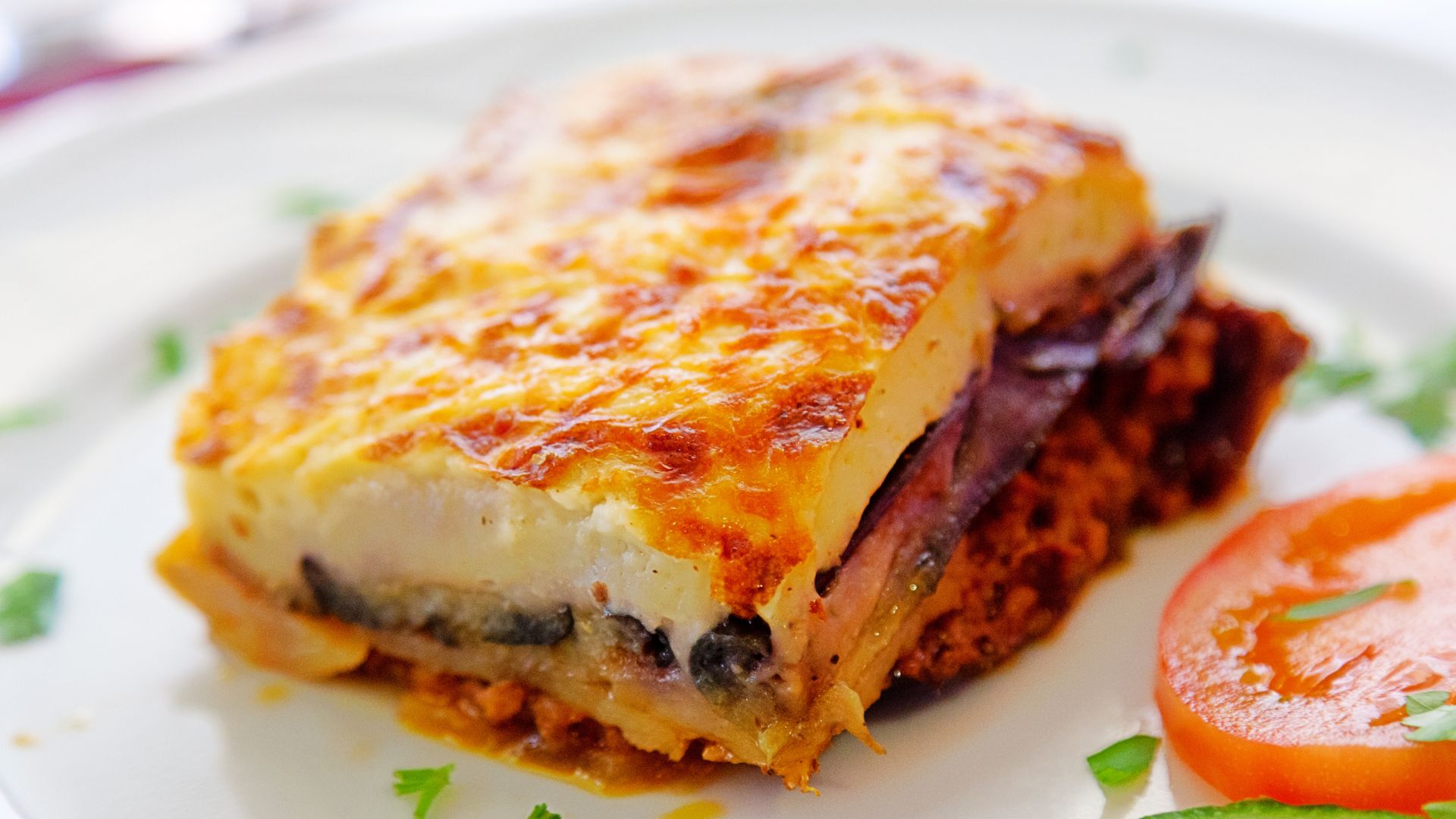
How has Greece’s history influenced its food culture and cuisine?
Greek cooking has roots that go back thousands of years. You still see ancient techniques and ingredients in today’s dishes.
The Byzantine Empire brought in all sorts of savory pie recipes. That’s where spanakopita and other phyllo pies come from.
During Ottoman times, Greek cuisine picked up plenty of new flavors. Dishes like moussaka and baklava show off those Turkish and Middle Eastern touches.
Trade brought in spices and new ways to cook. That’s why Greek food has such rich, layered flavors.
What separates traditional Greek food from other Mediterranean cuisines?
Greek food has its own vibe, thanks to ingredients like feta, Greek olive oil, and wild herbs. The flavors are bolder and earthier than you might expect.
The way Greeks use phyllo pastry is pretty unique too. Other Mediterranean countries use different doughs, but here, it’s all about those crisp, flaky layers.
Recipes keep things simple, letting each ingredient shine. Heavy sauces rarely cover up the main flavors.
Wild greens and mountain herbs make Greek dishes stand out. They add a rustic, foraged taste you don’t get in Italian or Spanish food.
What are the key ingredients that define authentic Greek cooking?
Extra virgin olive oil is the backbone. I use it for everything—cooking, salads, finishing a dish.
Feta cheese shows up everywhere. Its tangy, salty kick lifts salads, pastries, and mains.
Fresh herbs matter a lot. Oregano, dill, parsley, and mint pop up in so many recipes.
Lemon brings brightness. Both zest and juice go into grilled meats, veggies, and more.
Tomatoes, onions, and garlic form the base for lots of sauces and stews. Simple, but together they build deep flavors.
How can beginners navigate and appreciate the diversity of Greek cuisine?
Start with the familiar—moussaka and souvlaki are great first steps.
Try different places to eat. Tavernas feel like home, while psistarias focus on grilled meats.
Order meze if you can. These small plates let you sample a bunch of things at once.
Ask locals for their favorites. Greeks love talking about food and will point you to the best spots.
And don’t rush! Greek meals are meant to be slow, social, and savored.

What are some must-know recipes for classic Greek foods?
Greek salad? You really can’t go wrong if you start with quality ingredients and keep things simple. I like to toss together juicy tomatoes, crisp cucumbers, a bit of red onion, briny olives, and a slab of feta. Just drizzle everything with good olive oil and a splash of red wine vinegar.
Tzatziki is one of those dips I always crave. Thick Greek yogurt is a must, and I grate the cucumber, squeeze it dry, then mix it with minced garlic, olive oil, and plenty of fresh dill. If you skip draining the cucumber, the sauce gets watery—trust me, I’ve made that mistake.
When I’m feeling like grilling, I go for classic souvlaki. I marinate chunks of pork or chicken in olive oil, lemon juice, oregano, and garlic. After a few hours, I thread them onto skewers and grill until they’re just right.
Avgolemono soup is pure Greek comfort. I simmer chicken broth and rice, then slowly whisk in eggs and lemon juice. The trick? You’ve got to temper those eggs or you’ll end up with scrambled egg soup (not ideal).
And then there are Greek potatoes. I toss them with olive oil, lemon juice, oregano, and garlic, then roast until they’re golden and tender. The smell alone brings back memories of summer evenings by the sea.

